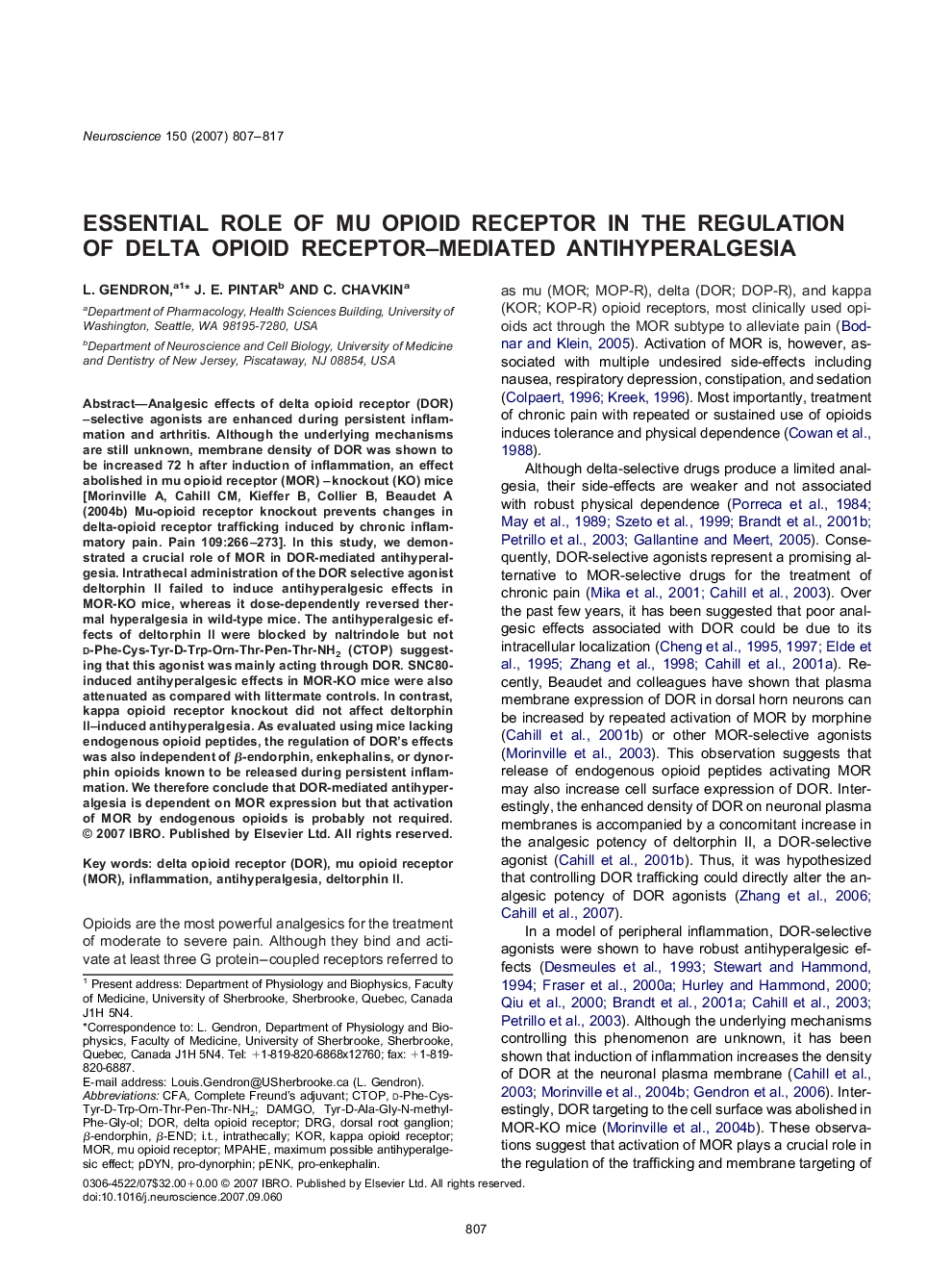| Article ID | Journal | Published Year | Pages | File Type |
|---|---|---|---|---|
| 4341017 | Neuroscience | 2007 | 11 Pages |
Abstract
Analgesic effects of delta opioid receptor (DOR) -selective agonists are enhanced during persistent inflammation and arthritis. Although the underlying mechanisms are still unknown, membrane density of DOR was shown to be increased 72 h after induction of inflammation, an effect abolished in mu opioid receptor (MOR) -knockout (KO) mice [Morinville A, Cahill CM, Kieffer B, Collier B, Beaudet A (2004b) Mu-opioid receptor knockout prevents changes in delta-opioid receptor trafficking induced by chronic inflammatory pain. Pain 109:266-273]. In this study, we demonstrated a crucial role of MOR in DOR-mediated antihyperalgesia. Intrathecal administration of the DOR selective agonist deltorphin II failed to induce antihyperalgesic effects in MOR-KO mice, whereas it dose-dependently reversed thermal hyperalgesia in wild-type mice. The antihyperalgesic effects of deltorphin II were blocked by naltrindole but not d-Phe-Cys-Tyr-D-Trp-Orn-Thr-Pen-Thr-NH2 (CTOP) suggesting that this agonist was mainly acting through DOR. SNC80-induced antihyperalgesic effects in MOR-KO mice were also attenuated as compared with littermate controls. In contrast, kappa opioid receptor knockout did not affect deltorphin II-induced antihyperalgesia. As evaluated using mice lacking endogenous opioid peptides, the regulation of DOR's effects was also independent of β-endorphin, enkephalins, or dynorphin opioids known to be released during persistent inflammation. We therefore conclude that DOR-mediated antihyperalgesia is dependent on MOR expression but that activation of MOR by endogenous opioids is probably not required.
Keywords
Related Topics
Life Sciences
Neuroscience
Neuroscience (General)
Authors
L. Gendron, J.E. Pintar, C. Chavkin,
